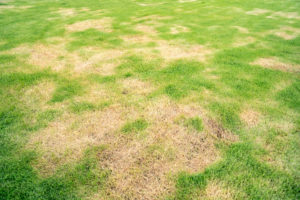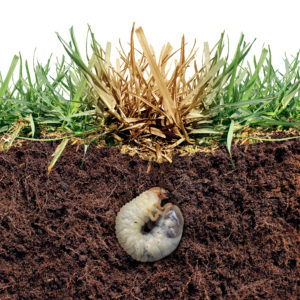5-Step Lawn Health Program
We're here to keep your yard healthy!
Is your lawn thin, filled with weeds, or being destroyed by pests? If your lawn has too high or too low a soil pH and poor fertilization, it will become thin. The bare areas in a thinning lawn are where weeds grow best and eventually can take over your entire yard.
There are many things to consider when caring for and maintaining a healthy lawn; including pest and weed control. Professional lawn maintenance services can help make sure your lawn stays green and healthy all year long. Ensuring that your lawn is healthy is a great way to add curb appeal to your home. Additionally, it can improve your quality of life and the value of your home.
We offer a variety of solutions for proper care and protection of your lawn. Our certified lawn care can evaluate the unique circumstances of your lawn. Soil testing is included with the 5-Step Lawn Health Program and our first step. From there we recommend a management program best suited for your lawn’s specific needs.
Our 5-Step Lawn Health Program
Our 5-Step Lawn Health Program includes these five fertilizing treatments that work together to give you the healthiest and best lawn possible.
Here is a breakdown of the five lawn applications:
#1: Crab Grass Prevention
#2: Spring Broadleaf Weed Control
#3: Grub and Insect Control
#4: Fall Broadleaf Weed Control
#5: Winterizing Fertilizer
These services are weather dependent and we keep to a schedule to ensure your lawn is getting the proper treatment.
Our technicians are licensed and certified by the PA Department of Agriculture.
Soil Testing
We sample your soil and have it tested with the first treatment service so we can then recommend a fertilizing program to provide the proper nutrition for your lawn. This will help your lawn be stronger and healthier, helping it to overcome drought stress quicker and have a greater chance of surviving attacks from insects and diseases. Thick, healthy grass will provide a barrier in keeping the weeds from taking over your lawn. Soil testing is the key to proper pH management and fertilization. Soil tests help to provide a proper course of action for fertilization and liming to establish sand maintain your grass.
Having a professional treat your lawn to make sure damaging pests do not attack helps you better care for and invest in your lawn. This maintenance can save you a significant amount of time and money in the long run.
Common Lawn Fertilizers
Nitrogen is the nutrient that helps keep the leaf of the grass green. It should be supplied in order to favor the desired grass species growth.
Phosphorus fertilization increases seedling strength and is one factor in reducing invading weeds in newly established lawns.
Potassium is necessary for lawn growth and development. It helps the grass grow faster, be more drought resistant, fight off disease, resist pests, and grow stronger.
Lime should be applied when the soil is too acidic. If your soil has a low pH level, it could lead to deficiencies in your lawn’s nutrient system including, low calcium, magnesium, or phosphorus. It can also increase amounts of aluminum and manganese, so much that it may kill your grass. Liming improves plant nutrient availability and reduces toxicity problems in acid soils.
Common Lawn Diseases, Weeds & Pests

Many lawn diseases are caused by the presence of a fungus. These fungi often use your grass as a food source to live and thrive on. This can lead to common lawn diseases like: Brown Patch, Dollar Spot, Powdery Mildew, Snow Mold, Red Thread, and Rust Disease. Understanding how these fungi develop and flourish is an important part of knowing how to treat your lawn. If your lawn is under the threat of these diseases, it has reduced resilience and is more susceptible to further damage from weeds and pests.

Another contributor to lawn damage is the presence of weeds. Common weeds found in Southeastern Pennsylvania include Crabgrass, Chickweed, Foxtail, Nutsedge, and Dandelion. These plants can severally damage your lawn if left uncontrolled. A major component in developing a weed prevention plan is being able to properly identify the weeds. Weeds have strengths and weaknesses that make them more or less susceptible at different stages in their life cycle. Proper identification and knowledge of weed life cycle, spread and reproduction are important factors when developing a management plan.

Weeds and diseases might be easier to spot with the naked eye, but they aren’t the only things that can damage your lawn. The presence of lawn damaging insects and their larvae, under the roots of your grass, can also have a profound effect on the health of your yard. Insect larvae that live at the root level can destroy your grass’s vital nutritional support system. Full grown insects can also cause damage by eating away at grass or the leaves of shrubs. It is very important to correctly identify these insects in order to treat and prevent your lawn from any further damage.
